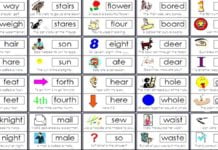In linguistics, discourse refers to language use beyond the level of individual sentences — how meaning is constructed, interpreted, and connected across sentences and contexts. It studies how sentences combine to form larger units of communication such as conversations, speeches, essays, and narratives.
Discourse is not merely a sequence of grammatical sentences; it is language in use, shaped by social, cultural, and cognitive factors. The study of discourse therefore explores how speakers and writers convey ideas, beliefs, and emotions, and how listeners or readers interpret them.
Within discourse analysis, several key concepts help us understand how meaning operates beyond the literal level — notably proposition, presupposition, entailment, and implication.
Proposition
A proposition is the basic unit of meaning or thought expressed by a sentence — the idea or statement that can be judged as true or false. It is the abstract semantic content of an utterance, independent of its grammatical form or tense.
- Sentence 1: John is eating an apple.
- Sentence 2: An apple is being eaten by John.
Both sentences differ in structure (active/passive voice), but they express the same proposition: “John eats an apple.”
A proposition is therefore what remains constant when linguistic form changes but meaning stays the same. It captures the essential idea conveyed by a statement.
In discourse analysis, propositions help identify what information each sentence contributes to the overall meaning. A text or conversation can be seen as a chain of propositions logically related to each other.
Characteristics of a Proposition
- It expresses a complete thought or statement.
- It can be true or false.
- It is independent of the grammatical structure used to express it.
- It forms the basis for logical relationships like entailment and presupposition.
Examples
- The sun rises in the east. → Proposition: “The sun rises in the east.” (True statement in reality.)
- She loves poetry. → Proposition: “She loves poetry.” (Can be true or false depending on the situation.)
Presupposition
A presupposition is background information that is assumed to be true or taken for granted by the speaker and listener before a statement is made. It forms the foundation upon which new information is built.
- John’s brother is tall.
This presupposes that John has a brother.
- John’s brother is tall.
Even if the main statement is questioned, denied, or negated, the presupposition often remains intact:
- John’s brother isn’t tall. → Still presupposes John has a brother.
Presupposition operates at a pragmatic level — it depends on shared knowledge between speaker and listener. It helps communication flow smoothly by assuming common ground.
Types of Presupposition
- Existential Presupposition – Assumes the existence of something.
E.g., My car is new. → Presupposes I have a car. - Factive Presupposition – Assumes the truth of an embedded clause.
E.g., She realised that he was lying. → Presupposes He was lying. - Lexical Presupposition – Triggered by specific words like stop, continue, again.
E.g., He stopped smoking. → Presupposes He used to smoke. - Structural Presupposition – Created by certain sentence structures.
E.g., When did you arrive? → Presupposes You arrived. - Non-factive Presupposition – Assumes something is not necessarily true but possible.
E.g., He dreamed that he was rich. → Presupposes He was not actually rich.
In discourse, presuppositions ensure coherence — they link sentences by carrying unstated assumptions forward.
Entailment
Entailment is a logical relationship between two statements in which the truth of one (A) guarantees the truth of another (B). If the first statement is true, the second must also be true.
- A: Mary has a sister.
- B: Mary is female.
Here, A entails B because it is logically impossible for A to be true while B is false.
Entailment differs from presupposition because it depends purely on logic rather than shared background knowledge. It is a truth-based relation between propositions.
Key features
- Entailment is one-directional: if A entails B, the reverse may not be true.
- Entailment is cancelled if the first statement is false.
Examples
- John killed the snake. → entails → The snake is dead.
- She bought a car. → entails → She bought something.
- He is a bachelor. → entails → He is unmarried.
Difference from Presupposition
| Aspect | Entailment | Presupposition |
| Nature | Logical consequence | Background assumption |
| Dependence on truth | Depends on truth of main statement | Survives even if main statement is negated |
| Example | He was murdered ⇒ He is dead | His wife stopped smoking ⇒ His wife used to smoke |
Entailment plays a vital role in discourse coherence, as it links propositions through logical dependency.
Implication
Implication (or Implicature, in pragmatics) refers to additional meaning that is suggested or inferred by the speaker but not directly stated in words. It depends on the listener’s ability to interpret context, tone, and shared knowledge.
- It’s getting late. → might imply → We should leave now.
- Some of the students passed the test. → implies → Not all of them passed.
Implication arises from the pragmatic use of language rather than its literal meaning. It allows speakers to convey subtle messages indirectly.
The philosopher H P Grice introduced the concept of conversational implicature, which explains how speakers rely on shared principles of communication (Grice’s Maxims: Quantity, Quality, Relation, and Manner) to imply more than they explicitly say.
Types of Implication
- Conventional Implicature – Attached to specific words like but, even, therefore.
E.g., He is poor but honest. → implies contrast between poverty and honesty. - Conversational Implicature – Inferred from conversational context.
E.g., Can you reach the salt? → literally asks about ability, but implies a polite request.
Implication enriches communication, enabling indirectness, politeness, humour, and irony. In discourse, much of what is understood between speakers comes through implication rather than explicit statement.
| Concept | Definition | Example | Key Feature |
| Proposition | Basic unit of meaning or thought; the idea expressed by a sentence. | John is eating an apple. | Can be true or false; remains same across structures. |
| Presupposition | Background assumption taken as true before a statement. | John’s brother is tall. → John has a brother. | Survives under negation; depends on shared knowledge. |
| Entailment | Logical relationship where truth of one statement ensures truth of another. | John killed the snake. → The snake is dead. | Based on logic; fails if original statement is false. |
| Implication | Additional, indirect meaning inferred from context. | It’s cold here. → Close the window. | Suggested, not stated; context-dependent. |
In discourse analysis, meaning is constructed not only from words and sentences but also from the underlying logical and pragmatic relationships among them.
- Propositions form the basic informational content of discourse.
- Presuppositions provide shared background assumptions that ensure coherence.
- Entailments establish logical dependencies between statements.
- Implications convey subtle, inferred meanings that enrich communication.
Together, these elements illustrate that understanding discourse is not just decoding words, but interpreting relationships, intentions, and contexts — the essence of how humans communicate meaningfully.



























